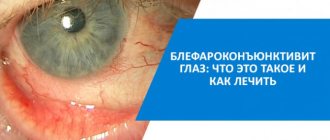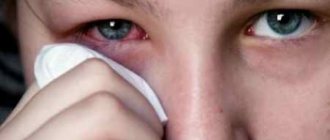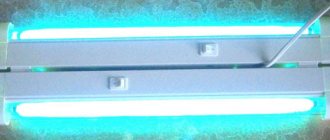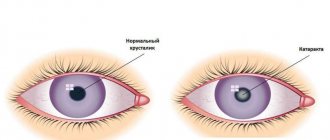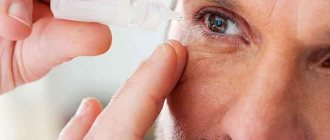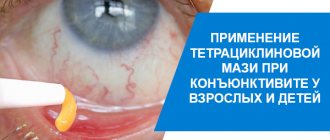Physiotherapy involves the use of physical factors such as electric current, magnetic waves, light, heat, ultrasound, laser to influence the human body, helping it fight the disease. At the same time, doctors can limit themselves to minimal stress on the body, while obtaining a decent result.
In ophthalmology, electrical stimulation of the optic nerve in a child is often used to improve the condition of the eye. It is based on the effect of pulsed electric current on muscles and nerves, which also has a positive effect on the retina and local blood vessels. Thus, the procedure has a complex effect, which has a beneficial effect on the health of patients. The method makes it possible to enhance the transmission of nerve impulses to the visual cortex with their further adaptation, distribution and processing.
Effect on the body
Electrical stimulation affects the body through pulses of different durations - from 0.5 to 300 ms, with a current strength of up to 5 mA (on the face), up to 100 mA (on the body) and a frequency of 10-150 Hz, which operate intermittently. Despite the fact that the patient does not move during the procedure, this effect is identical to the normal work of the muscles during their activity. The current passes through the tissue, excites the cells and stimulates the active work of the muscle, and during pauses it relaxes.
The current, thanks to this rhythm of work, does not irritate the skin under the electrodes and the epidermis is not damaged. When an electric current is applied to muscles or nerves, their bioactivity changes. The impulses provoke contraction of muscle fibers, which strengthens and activates them. If a muscle is overstrained, electrical stimulation relieves such tension well.
Electrical stimulation of the back muscles in the neurology clinic is performed on patients with an immobile or curved spine. It reduces pain, restores sensitivity, strengthens muscles. Procedures during the rehabilitation phase after spinal surgery help strengthen the back muscles.
Electrical stimulation of the muscles of the lower extremities allows you to restore the function of the following muscles:
- biceps femoris muscle – restores flexion of the knee joint;
- calf muscle – helps restore foot flexion function;
- peronalis muscle – strengthens dorsiflexion and abduction of the foot;
- rectus femoris muscle – improves leg extension at the knee joint.
Electrical stimulation of the thigh muscles helps actively fight osteoarthritis and helps recover after joint replacement surgery. Electrical stimulation of facial muscles accelerates oxygen utilization and reduces energy expenditure for contraction. After physical activity, lactic acid accumulates, and the current removes it from the muscles, relieving pain.
Electrical stimulation of the arm muscles restores the function of the following muscles:
- deltoid - helps to resume shoulder abduction to the side, back and forward;
- extensors of the hand and fingers – restores extension function;
- triceps - improves extension of the arm at the elbow joint;
- biceps – will help bend the arm at the elbow joint;
- flexors of the hand and fingers – improves their flexion.
electrical stimulation of the eyes
Why would an orthopedist treat a problem that doesn’t exist? Because he must support a huge industry, which includes manufacturers and sellers of supposedly “correct” shoes and insoles, massage therapists.
I warn you right away that my opinion is unprofessional, incompetent, emotional and, apparently, unpopular in Russia. I’m just Masha, who knows how to google, analyze information and observe what kind of shoes foreign children wear. And I want to tell you that, in addition to the domestic school of orthopedics, there are some other points of view and they are very common throughout the civilized world.
You can swear, you can disagree, you can consider me a fool, you can breathe a sigh of relief, you can thank me, I’m still not responsible for my words)
***
Every orthopedist in Varina’s life said: “flat-valgus placement of the feet. The right shoes, massage, exercise therapy.” Particularly sophisticated ones recommended paraffin, electrical stimulation, standing on peas, cutting off the soles of sandals on an incline.
Of course, I bought supposedly correct orthopedic shoes with high, hard heels, arch support, heels and other crap. We had a massage once every six months. I haven't seen any improvement.
As usually happens, the truth was born from doubt
Varina's last correct sandals ran out when we were getting ready to go abroad. I didn’t have time to order ortho shoes in Russia and left on our long trip with the hope of buying shoes there. “There’s probably a larger selection of good shoes abroad,” I thought.
I came to a shopping mall in Hong Kong and there were no proper shoes in either the first mall, or the second, or the third. I only found the Dr Kong store, but even these shoes did not fully meet the precepts of domestic orthopedics.
Meanwhile, 70% of Hong Kong children were wearing Crocs, another 20% were wearing New Balance, and the rest were wearing unidentified Chinese shoes.
In Bali, I also did not see a single child wearing preventative or orthopedic shoes. Not from locals, not from foreign tourists.
There is such a cool joke that is actually not a joke at all: children from Russia abroad can be recognized by their shoes. Indeed, if a child walks towards you in socks and high sandals with a backdrop, arch support and other conditions, then this is a Russian-speaking kid. In Hong Kong, Indonesia, Singapore and Thailand, all foreign children wear random shoes.
Again, if you order clothes from European or American online stores, you have probably noticed that their entire range of shoes completely contradicts the logic of domestic orthopedics.
And here I finally come to an explanation of my position. There are two schools of orthopedics, roughly speaking, ours and not ours. True, if you read the Medservice forum, you can conclude that some orthopedists are finally emerging from the darkness and are leaning toward Western orthopedic thought. Which is what I'm trying to convey in this post.
Overdiagnosis
Why would an orthopedist treat a problem that doesn’t exist? Because he must support a huge industry, which includes manufacturers and sellers of supposedly “correct” shoes and insoles, massage therapists. Because if flat feet or valgus does not go away with age, no one will be able to say that they did nothing. Because mothers are often not satisfied with the recommendation “don’t do anything - everything will go away on its own.”
Most children have no problems with their feet (and below I will tell you that neither flat feet, nor valgus, nor club feet are something that needs to be corrected), and the tradition of taking a child to an orthopedist before the age of 3 can be abolished.
Okay, not all children are equally healthy. But if the child really has something, then the doctor does not write down “correct shoes, massage” on the card, but undertakes a real therapeutic attack, gives directions for x-rays, examinations, a prescription for making shoes, etc. If your child was not sent along this route, then you can relax: everything is normal with him.
When an orthopedist tells some abstract mother (actually, me) that the child has hallux valgus, her world collapses, she comes home and begins to monitor the Internet for this terrible diagnosis.
There are a lot of articles on the Internet, written in beautiful and incomprehensible semi-medical language, which explain in detail why children from birth need to wear orthopedic (even not prophylactic) shoes. (For example). But for some reason all these articles are posted on the websites of stores of orthopedic shoes, insoles and other gadgets. Even I, a person without a medical education, am perplexed by the following words:
In the absence of rational shoes - with a rigid sole and a bend line at the level of the metatarsophalangeal joint, fixation of the talocalcaneal joint due to the rigid rear part with lateral tibia and alignment of the longitudinal-transverse arch of the foot with the help of an instep support - flat feet are formed, and subsequently - planovalgus deformity stop.
It turns out that flat feet happen when a parent does not buy orthopedic shoes for their child.
Orthopedic, preventive, correct shoes
Let me start with the fact that orthopedic shoes are not orthopedic shoes at all :) For some reason, many parents believe (not without the marketing efforts of sellers of children's shoes) that a) any shoes that look orthopedic are orthopedic, b) orthopedic shoes are useful.
Although, by the way, ortho shoes are therapeutic shoes, the insoles for which are made according to an individual impression or scan of the foot and the purpose of wearing them is to treat various deviations from the normal development of the foot.
Everything that is mass-produced and sold in stores is ordinary shoes that want to look like orthopedic ones. For some reason they call it preventative. These shoes are supposedly a guarantee that the child who wears them will not develop flat feet or valgus.
And these shoes seem to work, because by adulthood, children really become ok with their feet. Although this happens not thanks to the shoes, but in spite of them. Despite the rigid, inflexible sole, which prevents the leg from bending. Contrary to the anatomically incorrectly positioned arch support. Contrary to the boot that constrains the leg. Because a normal active child will in any case overcome parental care for his legs.
The situation with ortho shoes is as if wheelchairs or crutches became fashionable and all healthy people began to buy themselves something similar to a wheelchair or crutches.
In our country, people like to buy orthopedic shoes for children just in case, just in case. Ortho shoes for the first step, ortho shoes for walking, ortho shoes for the home. It’s good if these pseudo-orthopedic shoes are just a marketing scam.
Our first orthopedist named Gabisonia (St. Petersburg, clinic No. 112) looked at Varya at the age of 1. He really looked, without getting up from his chair, without touching the child with a finger. Varya did not walk on her own then, only by hand.
With his golden eye, he diagnosed flat-valgus feet (and I do not dispute this fact) and prescribed sandals with high tops, arch supports, and heels. Wear at home all day. (The same orthopedist found dysplasia in my friend’s daughter, prescribed a cast and some kind of spacers. At the Research Institute of Orthopedics and Traumatology, the doctors pointed a finger at this matter and sent my friends home).
Orthopedist Gabisonia showed me an example of “correct” shoes (it seems to me that in hell they give out something like this):
Our whole family goes barefoot at home. And the news that Varya has to walk around in uncomfortable sandals all day upset me. I also didn’t understand why a child who had just gotten to his feet and was still tentatively taking his first steps needed to be shackled in shoes. I still don't understand this logic.
The experiment with wearing “orthopedic” shoes at home lasted a couple of days. Varya was uncomfortable, I decided not to torture the child. Shoes were worn only where they were supposed to be worn - on the street.
The most common orthopedic “diagnoses”
Flat feet
Well, everything is clear here. 100% of children have physiological flat feet. The feet of a child under 3 years of age seem flat, because... the recess of the arch is filled with a soft fat pad. This form of flatfoot does not require treatment, since the arch of the foot, with proper development, normalizes on its own by the age of 5-6 years of a child’s life.
Some people believe that shoes with arch supports are a good prevention for flat feet. This is a lie and a provocation from shoe sellers, more on that below.
Plano-valgus placement of feet
I will dwell in more detail on the flat-valgus position of the foot, because Varya’s chart says exactly that. I deliberately do not call this a diagnosis, because it is not a diagnosis at all, but simply a statement of fact. It’s the same as if an ophthalmologist wrote “the child has brown eyes.”
If an orthopedist writes in the chart of a child who is 1 (2, 3, 4 years old) “flat valgus feet,” then he is Captain Obvious. Because up to 5 years old, flat-valgus feet are a normal variant and do not require treatment or adjustment. For a child who leads an active lifestyle, everything will correct itself. If at the age of 5 it has not yet improved, then you need to do something, attack orthopedists, tear out your hair, gouge out your eyes.
Valgus (and varus) occurs when some muscles are not sufficiently developed. In Varin's case, this is the inner part of the calves. Will shoes fix this situation? Has any person you know pumped up any muscle simply because they wore some special clothes or shoes? Only active activities and physical exercise, only hardcore!
What to do?
Buy shoes that don't hurt. (More on this below).
Allow the child to run, jump, crawl on climbing frames, and climb stairs.
Jump - on mats, on a trampoline, on a bed.
Climb the wall bars, stand on the crossbar.
Ride a bike.
From a certain age, you can send your child to choreography or dancing. Or go swimming. Or everywhere.
Please don't waste your money on "orthopedic" or "prevention" shoes. Use the money you save to buy a wall bars, mat or trampoline.
Buy special massage mats with uneven surfaces and place them at home in your child’s favorite hangout spots.
Allow your child to walk barefoot on grass, sand, stones - over any uneven surfaces.
Collect stones and pebbles from the street and take baths by walking on these stones (you can add sea salt to the water).
Contrast shower for feet.
Massage for very small children.
Meanwhile, paraffin and electrical stimulation have not proven their effectiveness.
What shoes should I buy?
Just comfortable, beautiful shoes made from natural materials with a flat insole and flexible sole, without instep support.
What specific brands can I recommend? Based on this opinion, I’ll name Little blue lamb, Jack&Lily, Pediped, See Kai Run. On my own behalf I’ll add Birkenstock and Ecco. Now I bought Varya Little blue lamb sandals and they are very cool:
Without arch support
Everyday children's shoes should not have an instep support. For some reason, everyone thinks that an instep support is a thing that will “press” the foot in the right place and there will be no flat feet. Bullshield! An instep support is a thing that cushions during physical activity.
If a child is prescribed shoes or insoles with arch support, then these must be custom-made insoles/shoes based on a cast or photograph. Because the arch support must be positioned correctly. In short, for a specific child - a specific instep support. But! Most children do not need an arch support at all.
Almost all domestic children's shoes already have an instep support. In most cases, however, this is only its appearance and a dummy. In fact, it breaks down after a week, does not absorb shock, and is a marketing bait for lovers of “ortho” shoes.
An instep support is needed when the foot cannot cope with shock absorption on its own. Then the instep support helps relieve the load on the leg. So, arch support is necessary in sports shoes for children and adults. At the same time, in children's everyday shoes, a really effective arch support can cause harm because:
- the area of the foot where the shock-absorbing arch should be formed is not trained and developed properly (since the arch support is in the shoe),
- when buying shoes for growth, the instep ends up in the wrong place and, instead of cushioning, interferes with the development of the longitudinal arches of the foot.
No rigid sole, the sole should bend.
Shoes should be made from natural materials (crocs are an exception wow).
Wide toe cap to prevent your toes from being squeezed.
The heel should be stable, securely fixing the heel.
Ideally, shoes should look as if they are not there and the child is walking barefoot.
So, brief conclusions of this huge post
- There are two diametrically opposed directions in orthopedics. Whom to believe is your choice.
- There is no need to “treat” with shoes and wear arch supports; this can stop the process of arch formation and flat feet will remain for life.
- Any correction must be individual. Fixing it incorrectly or unprofessionally can lead to even bigger problems. Here is a review from a mother who treated her child with shoes and instep supports.
- Arch supports in the form of soft “pillows” in ordinary shoes are not effective, because... they are too soft (hence they cannot support anything).
- Most “foot problems” noticed by parents are part of the natural development of a child’s foot, which ends by age 6.
- The “improvements” noticed by parents are not the result of wearing the “right shoes”, but only the natural development of the child’s foot.
- The need for mandatory instep supports in children's shoes (unless they are individually recommended by an orthopedic doctor) is nothing more than a myth, unconfirmed by official medicine, and is used by shoe manufacturers to increase shoe sales.
PS. Varyulya is 2 years old, and the valgus has become significantly less. I attribute this to the beginning of an active period of running and jumping, walking on uneven surfaces and refusing to wear the “right” shoes.
Masha Buzanova
Source
Indications and contraindications
Rehabilitation specialists at the Yusupov Hospital perform electrical stimulation for all conditions that are accompanied by paralysis or paresis of muscles, or traumatic nerve damage. Indications for electrical stimulation are:
- spastic paralysis in multiple sclerosis, amyotrophic lateral sclerosis, polyneuropathy and Guillain-Barré syndrome;
- Sensitivity disorders due to radicular syndromes and various traumatic injuries;
- central paresis and paralysis due to acute cerebrovascular accidents;
- prolonged muscle adynamia, accompanied by their hypotrophy.
Electrical stimulation is not used as a monotherapy and is a complementary rehabilitation measure. It is effective for the back muscles in patients who are on bed rest for a long time. During the procedures, the back muscles restore their resistance to stress and their former strength.
There are many contraindications to electrical muscle stimulation:
- acute period of ischemic damage to brain tissue, heart (stroke, myocardial infarction);
- malignant neoplasms;
- severe diseases of the cardiovascular system;
- febrile conditions, including sepsis;
- skin diseases at the site of stimulation.
Electrical stimulation of a patient suffering from epilepsy is contraindicated due to the fact that the procedure can provoke a convulsive attack. In case of traumatic injuries to nerves, muscles and tendons, electrical stimulation can be performed a month after the time of suturing. Otherwise, due to the sharply increasing mechanical load during muscle contraction during the procedure, suture failure may develop. Electrical stimulation is strictly contraindicated during pregnancy, because electrical stimulation can lead to an increase in uterine tone and cause premature termination of pregnancy.
Modern problems.
In ophthalmology, they contribute to the search for the latest methods for eliminating and correcting pathologies associated with the organ of vision. The strain on vision increases every year due to the strengthening of high technologies in everyday life. Computers, televisions, all kinds of monitors and, of course, reading, all this is true and gradually leads to the occurrence of pathology on the part of the organ of vision. However, it is not possible to eliminate all loads. Today, effective hardware eye treatment has appeared in ophthalmology.
Duration of treatment
The duration of electrical stimulation therapy at the Yusupov Hospital is determined by the attending physician depending on the severity of symptoms, how long ago the lesion was, and the nature of the pathological process. The duration of one procedure does not exceed 40 minutes, while one muscle or nerve is stimulated for a maximum of 2-3 minutes. After this, a pause of about 10 minutes is necessary.
Electrical stimulation is carried out daily or several times a day. The course of treatment ranges from 10 days to a month. A break between bites is made for 30 days, after which repeated treatment is carried out using this method.
What happens under the influence of current?
During electrical stimulation of the optic nerve, a series of impulses act on the orbital tissue, which stimulate rhythmic muscle contraction and excitation of nerve fibers. With regular repetition of the procedure, neuromuscular transmission improves. Thanks to this, the muscles respond more accurately and quickly to impulses that come from the brain. The main effect is directed on the ciliary muscles, which are involved in the processes of focusing vision and ensuring its sharpness.
This allows you to restore friendly muscle function and eye movement, which is important in the treatment of strabismus. Also, the use of electric current has a beneficial effect on blood vessels, normalizing their tone and relieving spasm. This improves blood supply to the retina and the functioning of the organ of vision. In addition, it promotes better circulation of aqueous humor and normalization of intraocular pressure, which is important in the treatment of glaucoma.
The feedback activity of the retina and visual cortex of the central nervous system also increases, and the number of active nerve fibers participating in this exchange increases, which allows the brain to carry out greater signal processing. Ophthalmologists always take this into account when prescribing a procedure. The work of the sensory part of the eye, namely the rods and cones, which are specific photoreceptors of the retina, is also optimized.
In the cerebral cortex, which is responsible for processing visual signals, the number of active cells increases, facilitating more active data processing, and new foci of excitation appear. The use of electric current also has a beneficial effect on cellular metabolism, activating regeneration processes, which leads to improved membrane function, protein and collagen synthesis.
Thus, a reorganization of existing connections between the visual cortex and intermediate centers of vision and the eyes itself occurs, which increases the efficiency of the entire system.
There is a theory according to which certain active points are affected, which stimulates the activation of reflex arcs that affect the centers of vision regulation. In this case, the effect of electrical stimulation of the eye muscles resembles acupuncture.
Indications for the procedure are:
- Hypermetropia.
- Strabismus.
- Thinning of the visual part of the retina.
- Atrophic processes in the optic nerves.
- Ptosis of the eyelids.
- Amblyopia.
- Asthenopia.
- Myopia.
- Presbyopia.
An important advantage of the procedure is its safety - it can be prescribed to both adults and children. If it is necessary to prevent myopia, the course of treatment can be repeated several times a year, at certain intervals.
What is included in the procedure
Before electrical stimulation, neurologists at the Yusupov Hospital find spasmodic muscles, determine the degree of increase in their tone, and recognize the presence of fibrotic changes. If the procedure is performed on the face, the patient is advised to remove makeup and degrease the skin. The physical therapist then applies a conductive gel to the skin and electrodes.
Electrodes are applied to areas where motor points are located: face, chest, back, abdomen, limbs and secured. Having selected the required current strength, frequency and duration, he conducts a session of electrical stimulation. At the end of the procedure, removes the electrodes and cleanses the skin of the gel.
Technique
Revascularization of the choroid has several modifications. The choice is made by an ophthalmic surgeon based on the patient’s diagnosis and the individual condition of the eyeball.
Fig. 2 Surgical treatment of PAI (partial atrophy of the optic nerve and abiotrophy of the retina) - revascularization surgery
- Section of the conjunctiva and Tenon's membrane of the eye
- Scleral flap
- Deep layers of the sclera
- Allograft (amnion, “Alloplant”)
- Interrupted sutures
The essence of all revascularization technologies for partial atrophy of the optic nerve and retinal diseases is to create a new, additional blood supply to the membranes of the posterior pole of the eye and the optic nerve. In this case, both the patient’s own tissues (episcleral or subconjunctival flap, parts of the extraocular muscles) and allografts (“Amnion”, “Alloplant”) can be used.
Through an incision in the conjunctiva and sclera, a pedunculated flap or allograft is inserted into the suprachoroidal space of the posterior segment of the eye, then the surgical area is covered with a homograft (the patient's own tissue), and absorbable sutures are applied.
Surgical treatment in our clinic is performed on an outpatient basis (1 day), in most cases under local anesthesia.
General anesthesia is required in children or adults suffering from neurological or mental illness.
The operation itself (in the standard case) takes 15-20 minutes.
Before surgical treatment, it is necessary to take blood tests (HIV, Hepatitis B and C, RW, complete blood count and glucose).
In the postoperative period, the patient instills antibacterial drops to prevent postoperative complications for 7-14 days. It is necessary to visit the clinic for 1-2 follow-up examinations by a specialist.
Electrical stimulation of muscles while walking
Treatment of motor neurological deficits involves the use of several treatment regimens. One of the modern ways to increase their effectiveness is artificial correction of movements. In this method, the patient is given electrical stimulation while walking. This is external electrical stimulation of muscles, the parameters of which are selected individually by rehabilitation specialists at the Yusupov Hospital in accordance with the patient’s characteristics, physiological norms and walking dynamics.
The method of electrical muscle stimulation allows you to achieve the following results:
- reduction of fatigue;
- increased range of motion when walking;
- increasing the pace of walking;
- increasing the maximum distance a patient can walk.
Electrical muscle stimulation in Moscow is used by rehabilitation clinic specialists as a method of treating motor neurological deficits. You can undergo a course of treatment by calling the Yusupov Hospital.
Conservative treatment of pelvic dysfunctions
In the initial stages of weakening of the pelvic muscles, including after childbirth, the following instructions from the category of conservative methods must be followed:
- adjust your diet;
- to refuse from bad habits;
- train the perineal muscles with special exercises;
- start taking prescribed medications;
- undergo a course of physiotherapeutic procedures.
If such treatment does not bring the desired result, then surgery is recommended.



